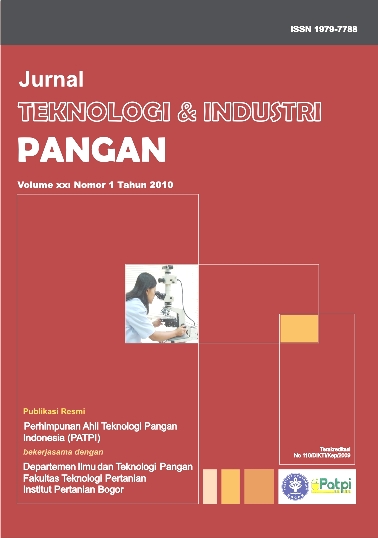Abstract
Moisture sorption isotherm of food powder products is pertinent in processing and stability of food. Food model consisted of tapioca starch, casein, palm oil and sucrose. The moisture sorption isotherm curves of the food model, tapioca starch and casein were sigmoid indicating the typical shape of amorphous product, while the water sorption isotherm of sucrose was a broken-line curve showing typical shape of crystalline material. The Guggenheim – Anderson-de Boer (GAB) model was the best model to predict sigmoid sorption isotherm curve (tapioca starch, casein and food model) at the whole range of experimental aw (0.07 – 0.97) while the Braunauer Emnet Teller (BET) model only fitted for aw up to 0.6. The Water binding capacity of tapioca at monolayer (Mm) was higher than casein and food model but the coefficient of adsorption energy (C) was lower than that of casein. Addition of oil at the food model decreased the water binding capacity at monolayer. The Grover model was more suitable than Ross model to predict the water sorption isotherm curve of food model from its composition.

